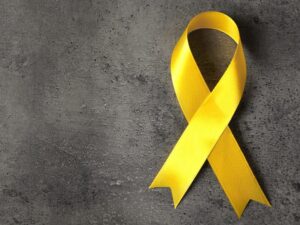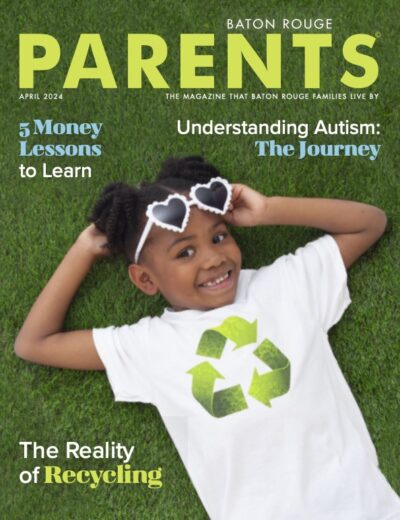
From the Brink of Suicide: Why Society Should Talk About Mental Illness
When I was a teenager, I was hanging out in my room one night when my mom came home really late. She quietly knocked and entered my bedroom. Her face was tear-stained and her voice cracked as she told me where she’d been. She had been attending the funeral services for a friend’s son who had committed suicide. She begged me to never consider such a thing. I promised that I would never kill myself, but that doesn’t mean that as a teen, and even into my twenties, that I didn’t think about it. In fact, lots of people think about it. Suicide is the second leading cause of death for individuals ages 10-24.
Talking About Suicide and Mental Illness
According to Danita LeBlanc, the Louisiana Office of Behavioral Health Suicide Prevention Coordinator, we should absolutely be talking about mental illness and suicide. “Talking about mental illness is important because it affects a lot of people. Suicide and suicidal thoughts affect people across the lifespan. Talking about it reduces the stigma associated with suicide. There is help available.” LeBlanc later adds that children as young as age eight think about suicide.
There is a spectrum of thoughts regarding suicide from “I wish I could sleep forever” type of thinking, which LeBlanc says is normal, all the way to planning the actual steps of committing the act. Penny, a local teacher, recalls, “I was 12 years old the first time it occurred to me that I could escape the daily torment from peers and my parents if I was not here at all. Once you realize you have an option, the only thing standing between you and it is the motivation that finally compels you to act. I did not actually attempt to end my life until I was 22 years old.” LeBlanc wants parents to know that it is ok to ask your child if they have ever had thoughts of suicide.
Mental health counselor Tara Dixon shares, “Be open to speaking with your child. Too often there is negative shamefulness associated with suicide and talking about suicide. This can prevent your children from asking for the help that they may desperately need.”
Myths vs. Reality
“There is a myth,” LeBlanc shares, “that talking about suicide will put the idea into someone’s head and make them do it. There is absolutely no research to support that myth.” However, sensationalizing suicide in the media has often been linked to the risk of additional suicides, according to ReportingOnSuicide.org’s document Recommendations for Reporting on Suicide.
Another popular myth is that friends and family have plenty of time to intervene before it happens. LeBlanc shares a shocking figure. Forty percent of the time, when a person has made the decision to act upon their suicidal thoughts, they act within 10 minutes.
Additionally, Dixon reports, “Many parents do not think that their family could be affected by suicide, but the numbers speak for themselves.” According to the Center for Disease Control and Prevention (CDC), in 2017, “7.4 percent of youth in grades 9-12 reported that they had made at least one suicide attempt in the past 12 months. Female students attempted almost twice as often as male students.”
Former police officer, Billy, who has been on the brink of suicide, shares his thoughts on the myth of suicide, “There is an internal belief that no one is going to understand how you feel, and that no one will care.”
Warning Signs
Children who are bullied are at greater risk for suicidal thoughts and behaviors. Listen to what your children are saying to you and their friends.
Red flag conversations can include the person claiming to have nothing to live for, wishing they were dead, feeling trapped, or feeling they are a burden to other people.
Look for warning signs in your child’s behavior. A lack of interest in social activities or activities that used to be fun and exciting is one warning sign that the person may be in distress. Sleeping too much or too little, giving away possessions, telling people goodbye, and increased alcohol and or drug use can be indicative of a deeper problem.
Parents of children who have Internet access should occasionally check the search history for searches that would indicate an interest in suicidal actions. Keeping up with their social media use can also be helpful.
Practical Tips
Both LeBlanc and Dixon were adamant about prevention strategies. Firearms and ammunition should be stored separately and locked in a place that is inaccessible to others. Youths who use firearms to kill themselves most often use family-owned firearms. Medications should be stored in a locked cabinet.
Do not underestimate their pain or crisis level. You may not understand the immediacy or depth of their thinking. Ask people directly if they are thinking about it to give them permission to talk about it. If the threat of suicide is eminent, take the person to the emergency room. Never leave a person who is displaying warning signs of suicide alone. Follow up. Once the person has received treatment, this does not mean that the thoughts cannot return. Suicidal thoughts are not one and done.
“It is important that we don’t sugarcoat the threat of suicide,” Billy adds. “When we talk about these things, we need to be as honest as possible so that other people become informed and won’t miss possible signs of suicidal thoughts in themselves or others. We need to encourage communication about suicide and depression. People want to hold those emotions in, but you can only hold that stuff in for so long before it is going to take over.”
Penny shares, “Your biggest challenge is going to be to remain calm. I am telling you this right now: Your child's life depends on you remaining calm. Find another adult for support, but right now, you have to find a way to make them understand they aren't 'freaks' for having these feelings. It's not an attitude, willpower, or influence at fault. Your child has an illness. No parent wants to lose a child to an illness any more than any child wants to die of one.”
There is hope. Thoughts may come again, but overriding them is possible. Billy shares, “Hope and recovery are the light at the end of the tunnel, but this time, that light is not the train coming.” ■
Finding Resources
In the midst of a crisis, it can be hard to know where to turn for help. Danita LeBlanc, the Louisiana Office of Behavioral Health Suicide Prevention Coordinator, shares the following resources and guiding practices. LeBlanc also warns about using a search engine to seek help.
She explains that a standard Internet search can yield as many how-to tutorials as interventions and prevention strategies.
- For a wealth of credible information about suicide prevention, visit suicidepreventionlifeline.org. You can read stories of loss, survival, learn how to raise awareness for suicide prevention, and call the lifeline at (800) 273-8255.
- On betheoneto.com, visitors can learn five steps for helping a person who is in crisis as well as how to spread the message that help is available. The site’s hashtag #betheoneto is gaining popularity across social media outlets.
- If the person you are concerned about is more comfortable with texting, the crisis text line is available 24/7 to provide support. Text 741741 for immediate and free suicide prevention support.
Getting Involved
The Baton Rouge chapter of the American Foundation for Suicide Prevention (AFSP) will host their annual “Out of the Darkness” Community Walk on Saturday, October 19.
AFSP has set a goal to reduce the annual suicide rate by 20 percent by 2025.





